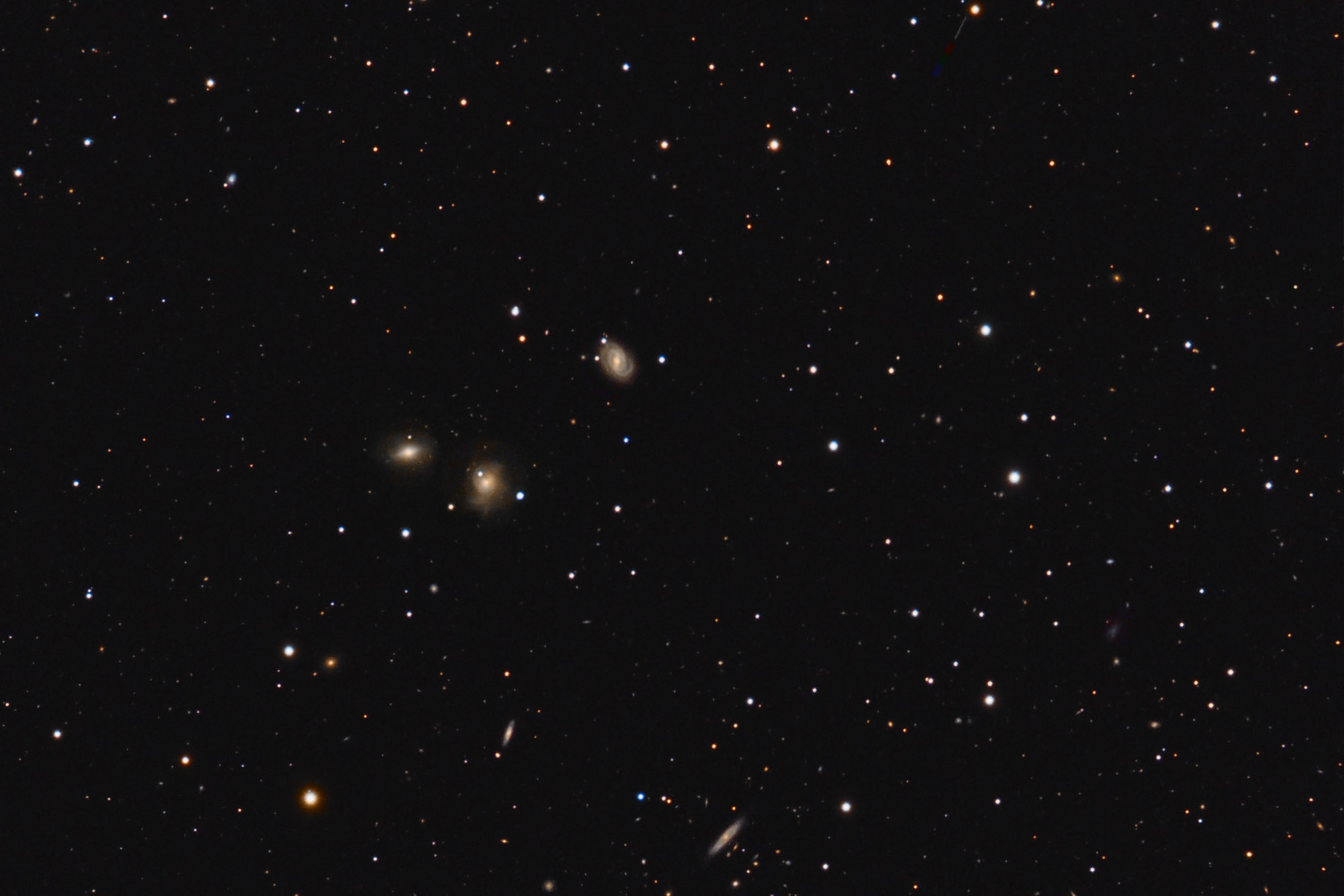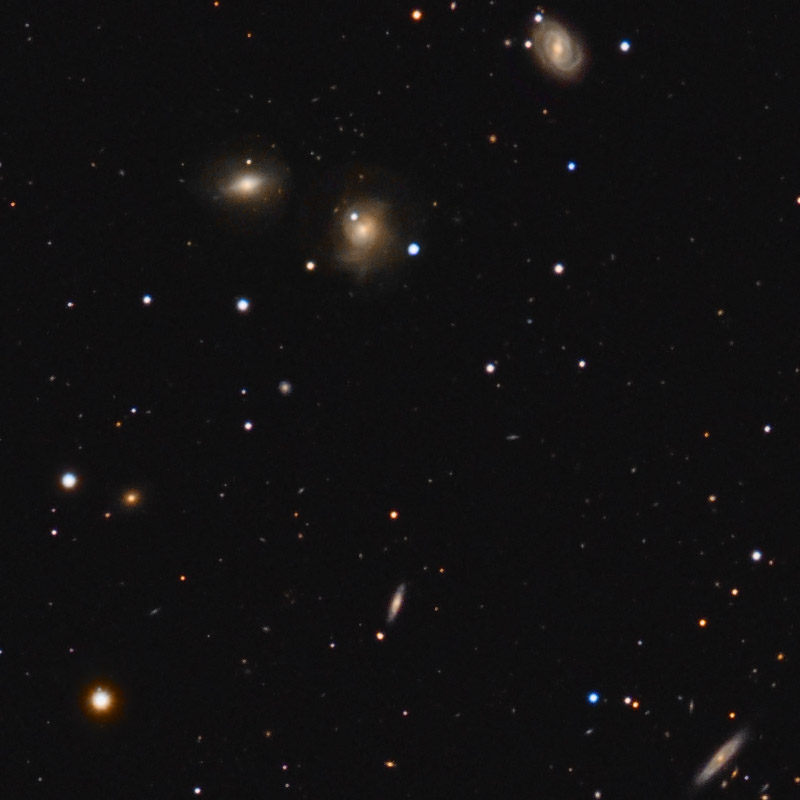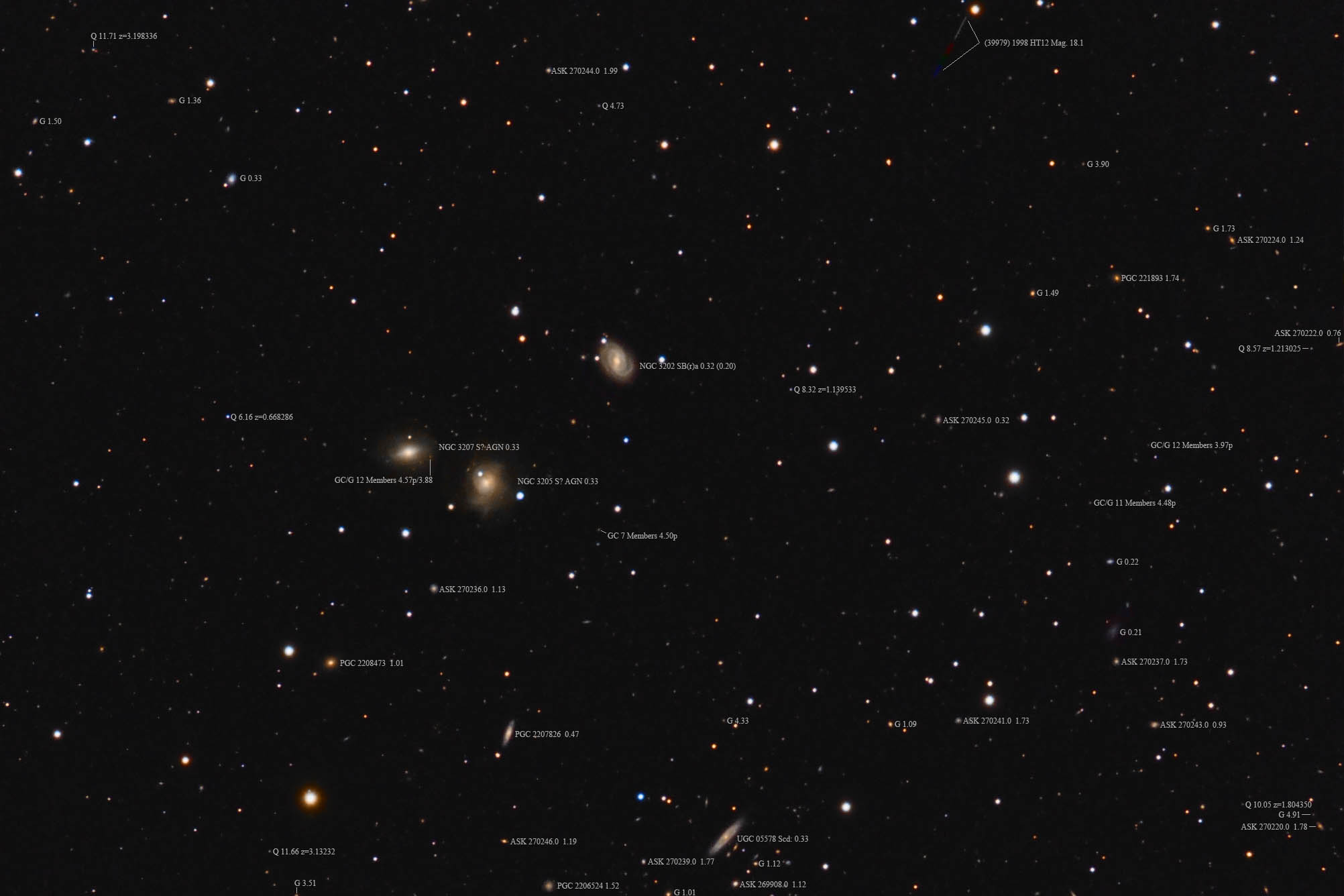| Description | Images |
Object name: NGC3205Designation(s): NGC3205, NGC3202, NGC3207, NGC 3205 is one of three galaxies in the LDCE 0722 galaxy group. It consists of three mostly red and dead spiral galaxies all seen rather face on. They are located in the hind feet of Ursa Major about 320 to 330 million light-years from us. NGC 3205 was my main subject as it has plumes indicating it has either had a near collision with another galaxy or is still digesting something it ate. I favor the latter as nothing else in the area appears obviously disturbed but NGC 3507 has hints of a faint plume to the northeast and the plume of 3205 extends almost to 3507. NGC 3205 is shown simply as S? by NED. The NGC Project says only pec even though it is an obvious spiral. Seligman comes in with Sa?? pec. I don't know what 2 question marks mean. Including the faintest parts of the plumes, I get a size of about 225,000 light-years. Including only the obvious plumes it is 140,000 light-years in size, still a large galaxy. It is the reddest of the three. That may be due to its gas and dust being either ejected or heated thus stopping star formation as a result of its interaction with another galaxy some billion years ago or so. Related Designation(s):2MASS J10203175+4301178, 2MASS J10204992+4258196, 2MASS J10210052+4259071, 2MASX J10203177+4301179, 2MASX J10204991+4258199, 2MASX J10210058+4259068, 2MASXi J1020317+430117, 2MASXi J1020499+425819, 2MASXi J1021004+425907, ASK 270240.0, ASK 270248.0, CGCG 1017.5+4316, CGCG 1017.8+4313, CGCG 1018.0+4314, CGCG 211-044, CGCG 211-046, CGCG 211-047, ECO 08235, ECO 08257, ECO 08278, FBQS J102100.4+425907, HDCE 0575 NED001, HDCE 0575 NED002, HDCE 0575 NED003, HOLM 179A, HOLM 179B, LDCE 0722 NED001, LDCE 0722 NED002, LDCE 0722 NED003, MCG +07-21-041, MCG +07-21-042, MCG +07-21-043, Mr18:[BFW2006] 09328 NED02, Mr18:[BFW2006] 09328 NED03, Mr19:[BFW2006] 18881 NED02, Mr19:[BFW2006] 18881 NED03, Mr19:[BFW2006] 18881 NED04, Mr20:[BFW2006] 30375 NED01, Mr20:[BFW2006] 30375 NED02, Mr20:[BFW2006] 30375 NED03, NGC 3202, NGC 3205, NGC 3207, NGC3202, NGC3205, NGC3207, NPM1G +43.0161, NSA 048234, NSA 048238, NSA 158191, PGC 030236, PGC 030254, PGC 030267, SDSS J102031.73+430117.7, SDSS J102031.74+430117.7, SDSS J102031.74+430117.8, SDSS J102049.96+425819.3, SDSS J102049.96+425819.4, SDSS J102049.97+425819.3, SDSS J102049.97+425819.4, SDSS J102100.54+425907.0, SDSS J102100.54+425907.1, SDSS J102100.55+425907.1, UGC 05581, UGC 05585, UGC 05587, USGC U295 NED01, USGC U295 NED02, USGC U295 NED03, UZC J102031.7+430118, UZC J102050.0+425817, UZC J102100.5+425907, UZC-CG 115 NED01, UZC-CG 115 NED02, UZC-CG 115 NED03, WBL 264-001, WBL 264-002, WBL 264-003, [BFW2006] J155.13223+43.02159 , [BFW2006] J155.20818+42.97206 , [BFW2006] J155.25226+42.98530 , [M98j] 084 NED01, [M98j] 084 NED02, [M98j] 084 NED03, [SUV2010] 420, [TTL2012] 503166, [TTL2012] 503168, [TTL2012] 503616, | Permanent link: https://images.mantrapskies.com/catalog/NGC/NGC3205-NGC3202-NGC3207/NGC3205L4X10RGB2X10.JPG |


